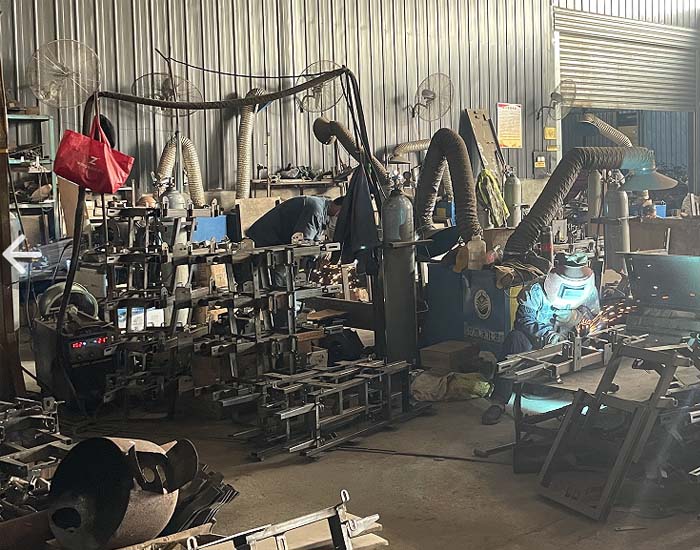mini combine harvester
The Evolution and Impact of Mini Combine Harvesters
In the world of agriculture, where efficiency and productivity dictate success, the advent of mini combine harvesters represents a significant technological leap. These compact machines are specifically designed to cater to small-scale farmers, enabling them to optimize their harvest processes, reduce labor costs, and improve overall yield. In this article, we will explore the evolution, benefits, and impact of mini combine harvesters on modern farming practices.
The Evolution of Mini Combine Harvesters
The concept of harvesting machinery dates back to the early 19th century, with the invention of the first mechanical reapers. However, it wasn’t until the mid-20th century that combine harvesters emerged. Traditional combine harvesters, while efficient, were often too large and expensive for smallholder farmers. In response to this gap in the market, manufacturers began developing mini combine harvesters in the late 20th century.
These mini versions are designed to be lightweight, easy to operate, and more affordable, making them accessible to farmers with limited resources. Over the years, advancements in technology have improved the functionality and reliability of these machines, incorporating features such as GPS navigation, advanced sensors, and improved cutting mechanisms. Consequently, mini combine harvesters have become an integral part of modern agriculture, especially in developing countries where small-scale farming predominates.
The Benefits of Mini Combine Harvesters
1. Cost Efficiency One of the primary advantages of mini combine harvesters is their cost-effectiveness. They require a lower initial investment compared to full-sized combines, making them feasible for smallholder farmers. Moreover, they consume less fuel, which can significantly reduce operational costs during harvest time.
2. Increased Productivity Mini combine harvesters can dramatically increase the efficiency of the harvesting process. With their ability to harvest, thresh, and clean crops in a single operation, farmers can finish their tasks much quicker than with traditional manual methods. This means that crops are harvested at their optimal time, reducing the risk of spoilage and loss.
mini combine harvester

3. Labor Savings In many regions, labor shortages during harvesting seasons can lead to delays and potential crop losses. Mini combine harvesters reduce the reliance on manual labor, allowing farmers to utilize fewer workers while still achieving a higher output. This is particularly advantageous in rural areas where labor can be scarce.
4. Versatility Mini combine harvesters are designed to be versatile, capable of handling various crops such as rice, wheat, and soybeans. This adaptability allows farmers to diversify their operations without needing multiple specialized machines. Some models can even be used in diverse terrains, making them practical for various farming conditions.
5. Environmental Impact Smaller machines like mini combine harvesters generally have a lower environmental footprint compared to larger models. They are typically designed to minimize soil compaction and fuel consumption, contributing to more sustainable farming practices. Additionally, their efficient operation can lead to reduced waste and better conservation of resources.
The Impact on Small-Scale Farmers
The introduction of mini combine harvesters has had a transformative impact on small-scale farmers, particularly in developing countries. Farmers who previously relied on manual labor have reported significant improvements in their productivity levels, allowing them to increase their income and improve their livelihoods. Access to modern machinery has also empowered them to adopt more sustainable practices, promoting food security and economic stability in rural communities.
Moreover, as small farmers become more productive, they can contribute more effectively to local and national economies. Enhanced harvest efficiency allows for surplus production, which can lead to increased sales in local markets. This ripple effect supports the wider agricultural sector and fosters economic growth.
Conclusion
The mini combine harvester is a testament to the innovation in agricultural technology aimed at supporting smallholder farmers. Between their cost-efficiency, productivity benefits, and positive environmental impact, they represent a crucial tool in the ongoing effort to enhance food production and sustainability. As the global population continues to rise and agricultural demands increase, the role of mini combine harvesters will undoubtedly become even more vital in ensuring food security and improving the livelihoods of farmers around the world.
Latest news
-
When to Upgrade Your Old Forage HarvesterNewsJun.05,2025
-
One Forage Harvester for All Your NeedsNewsJun.05,2025
-
Mastering the Grass Reaper MachineNewsJun.05,2025
-
How Small Farms Make Full Use of Wheat ReaperNewsJun.05,2025
-
Harvesting Wheat the Easy Way: Use a Mini Tractor ReaperNewsJun.05,2025
-
Growing Demand for the Mini Tractor Reaper in AsiaNewsJun.05,2025







